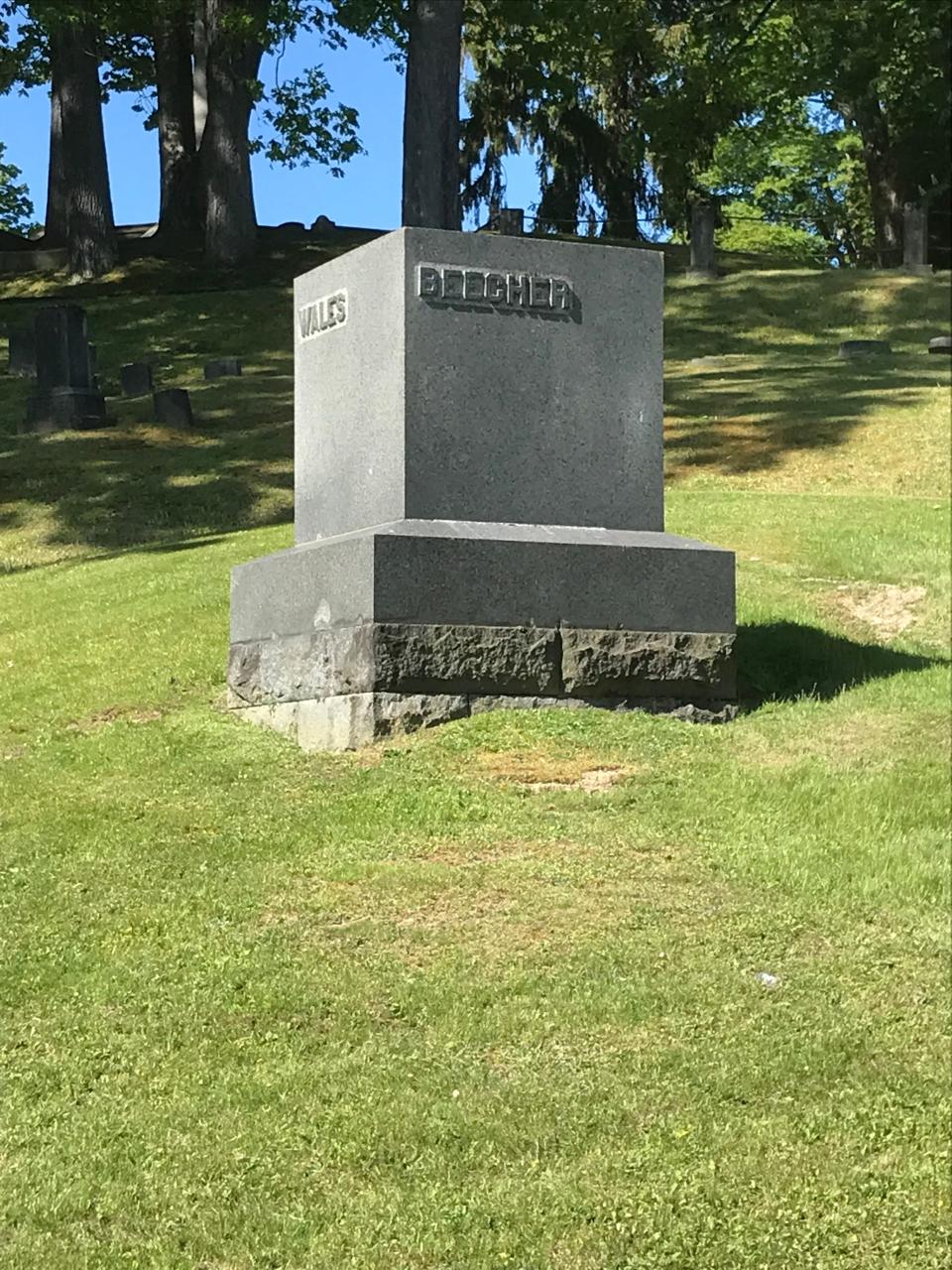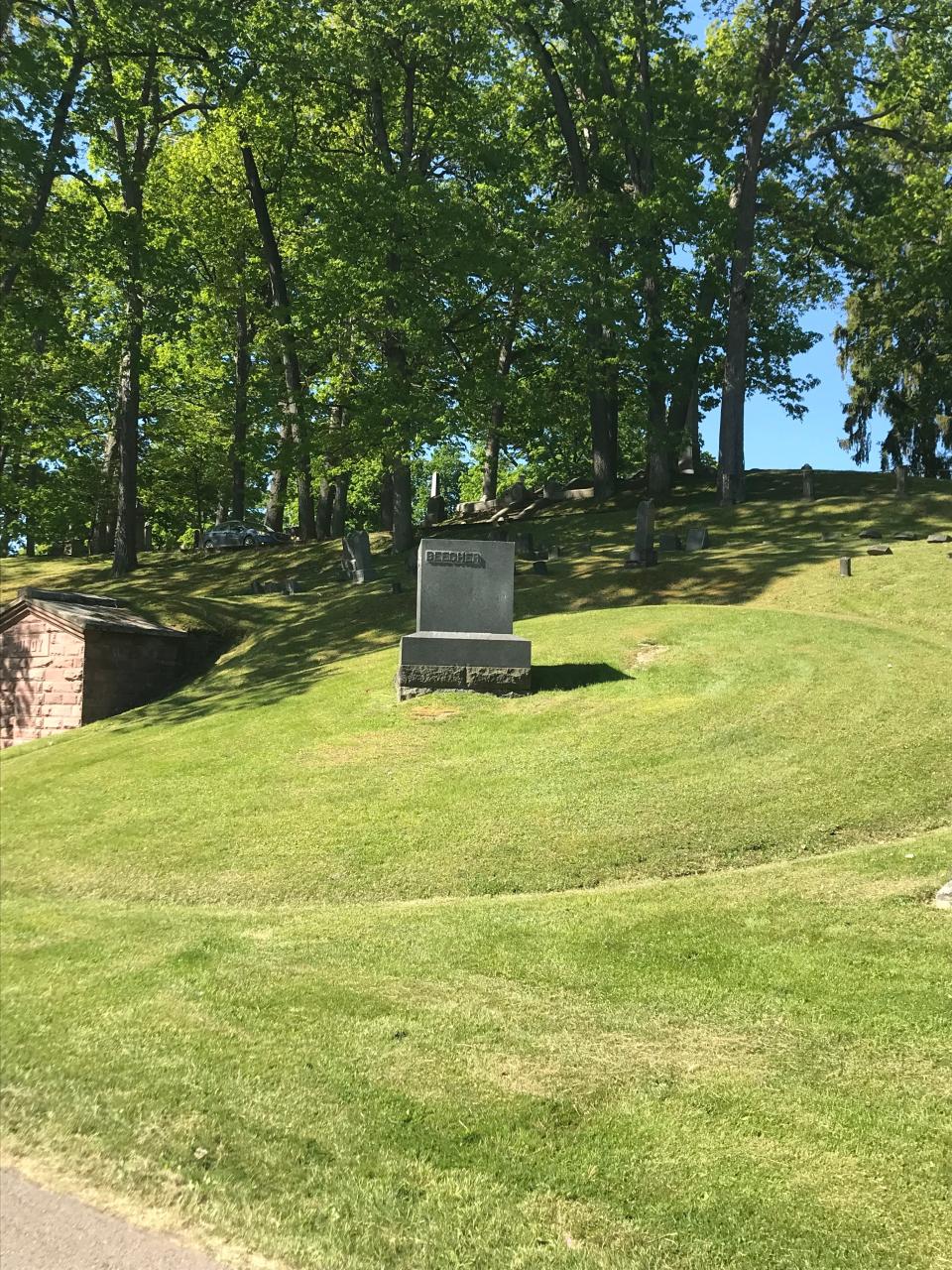Rev. Thomas K. Beecher left a lasting mark on Elmira. How community secured his legacy
On Sunday, March 11, 1900 the Rev. Thomas K. Beecher attended services at Park Church that evening. He remained afterwards and visited with a few of his friends.
According to Myra Glenn, a former Elmira College Professor, in her 1996 biography “Thomas K. Beecher, Minister to a Changing America 1824-1900:” “On the way home he suffered a massive paralytic stroke. By the time he reached his house, Beecher was unable to speak or move his right side. He was swaying uncontrollably in his seat and about to pitch forward under the carriage wheels. As she had done so many times before, Julia Beecher supported her husband one last time. She jumped into the carriage and held up the dead weight of her husband’s body in her arms and talked to him in a soothing voice while she waited for help to arrive from the Gleason Water Cure.”
Thomas K. Beecher died on the morning of March 14. Newspaper accounts indicated that his condition never improved and that “he did not appear to suffer any pain at any time, and when conscious was very serene …” (Elmira Daily Gazette and Free Press, March 14, 1900).
Beecher was 76 at the time of his death.
He had been in declining health for a number of years. Myra Glenn notes that “As Beecher’s health declined his church sought to help him recuperate from illness. They gave him generous leaves of absence and members contributions made possible vacation trips to England, California, Bermuda and elsewhere.” Eventually an associate pastor was hired to assist Beecher. When the new associate resigned Annis Eastman and her husband Samuel were appointed associates in 1894 and would succeed Beecher in the pulpit upon his passing.

Beecher had assisted in the ordination of Annis Eastman in 1892 and his support for she and Samuel to be associates and eventual successors “helped to create one of the earliest and most successful women ministries in the United States.” (Glenn) She served until her death in 1910 and Samuel until his retirement in 1917.
Thomas K. Beecher is buried in Woodlawn Cemetery in the only circular plot in the cemetery. It was purchased and designed by Beecher when his sister Catherine died in 1878 and was interred there. The huge monument can be seen from Davis Street on the hill to the left of the Hal Roach Gate. Within that plot and memorialized on the monument are four families. In addition to the Beecher family the Gleason, Brooks and Wales families are interred. The three families were friends of Beecher and intermarried among themselves. The plot is a combination of four lots and is divided into quadrants, one for each family.

Beecher was cremated in Buffalo, a practice ahead of its time. A number of other cremains are also interred there.
More: Elmira's Strawberry Mansion catches Cheap Old Houses spotlight. How much it's listed for
“On the day of the funeral (March 16, 1900) A. J. Oliver, one of Elmira’s best known citizens, in a letter to the Gazette suggested and asked for a monument to commemorate Mr. Beecher’s memory, asked the Gazette to receive subscriptions and offered $25 as his personal gift to start the fund. On the same day the late J.D.F. Slee was interviewed by a Gazette representative and suggested that a bronze monument be erected to Mr. Beecher’s memory and Hon. Edgar Denton suggested that the monument be erected in Wisner Park.” (Elmira Daily Gazette and Free Press, Dec 10, 1901)
Mayor F. H. Flood called for a mass meeting to discuss the monument proposal. After a couple such meetings a committee was formed and a house to house canvass was made to raise funds for the erection of the monument.
“A sum of $8,000 was raised. J. Scott Hartley of New York known as one of the leading sculptors of the country was selected to make the clay for the statue and Graham Manufacturing Company of New York was awarded the contract for making the bronze statue which was cast at their works in Connecticut. The pedestal for the statue was made of Red Westerly granite by the Harrison Granite Company at its headquarters in Westerly, Rhode Island." (Elmira Daily Gazette and Free Press December 10, 1901)
The bronze statue is eight feet tall and the pedestal is nine feet from the ground up, with a five foot base underground. It portrays Beecher at age 70.

Rev. Annis Eastman, in a sermon at the Park Church, described the purpose of the monument. “The image of marble or bronze will not be a vain memorial — for about it will gather the gospel of his life. Fathers will tell their children of that which he began to do and to teach until that silent figure will become a power in the lives of each succeeding generation — spurning cowardice and sin, inspiring truth and mercy.” (Elmira Daily Gazette March 26, 1900)
On Nov. 11, 1901, it was reported that the statue of “Father Tom” was in Elmira. The newspaper reported that an “ordinary looking rough wooden box … outwardly it bears no appearance of being anything more than a common piece of freight, but as matter of fact the large box contains something dear to the heart of every Elmiran, young or old, rich or poor — a life like image of the late Rev. Thomas K. Beecher “Father Tom” as he was known to all.” (Elmira Daily Gazette and Free Press, November 11, 1901)
The unveiling ceremony for the statue took place on Dec. 10, 1901. The newspaper headline read “Unveiling Beecher Turned Over to the City.”
This article originally appeared on The Evening Tribune: Rev. Thomas K. Beecher left a lasting mark on Elmira

